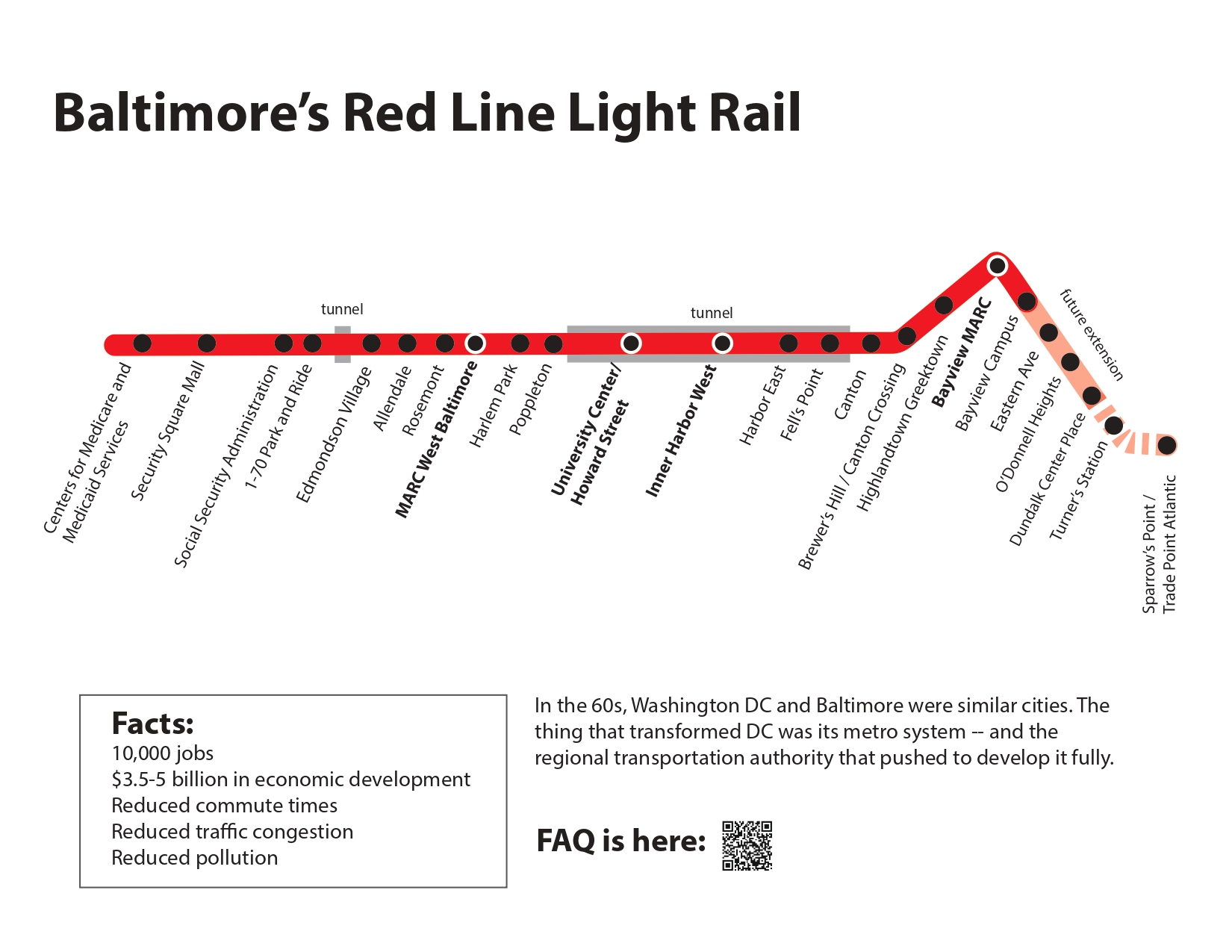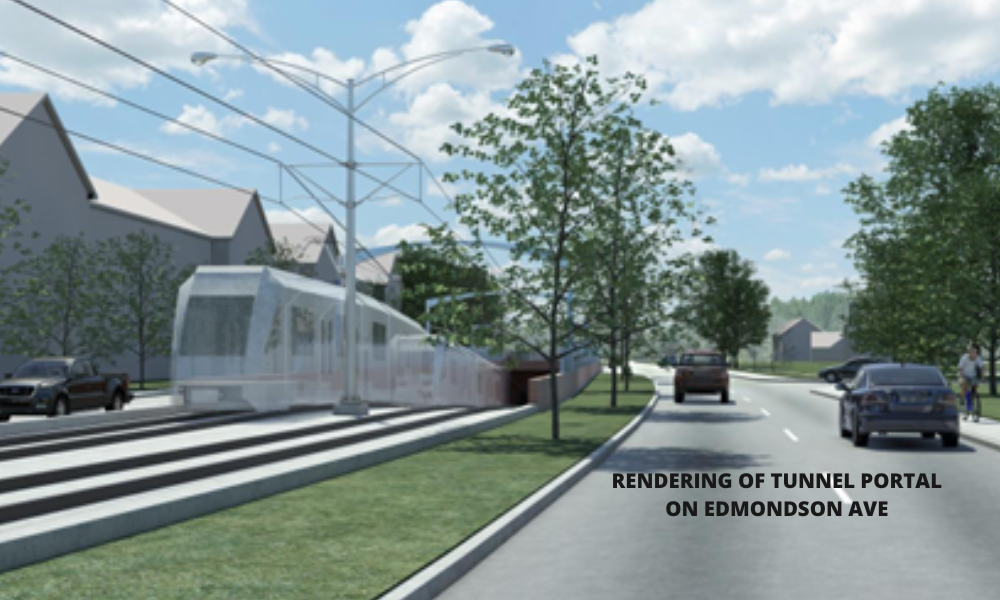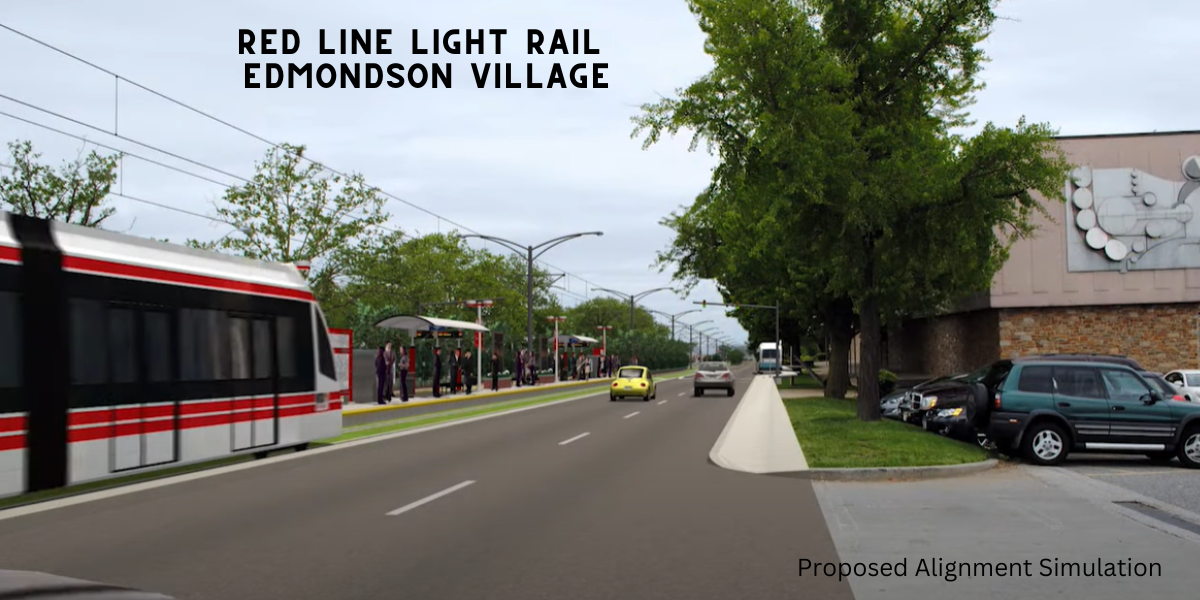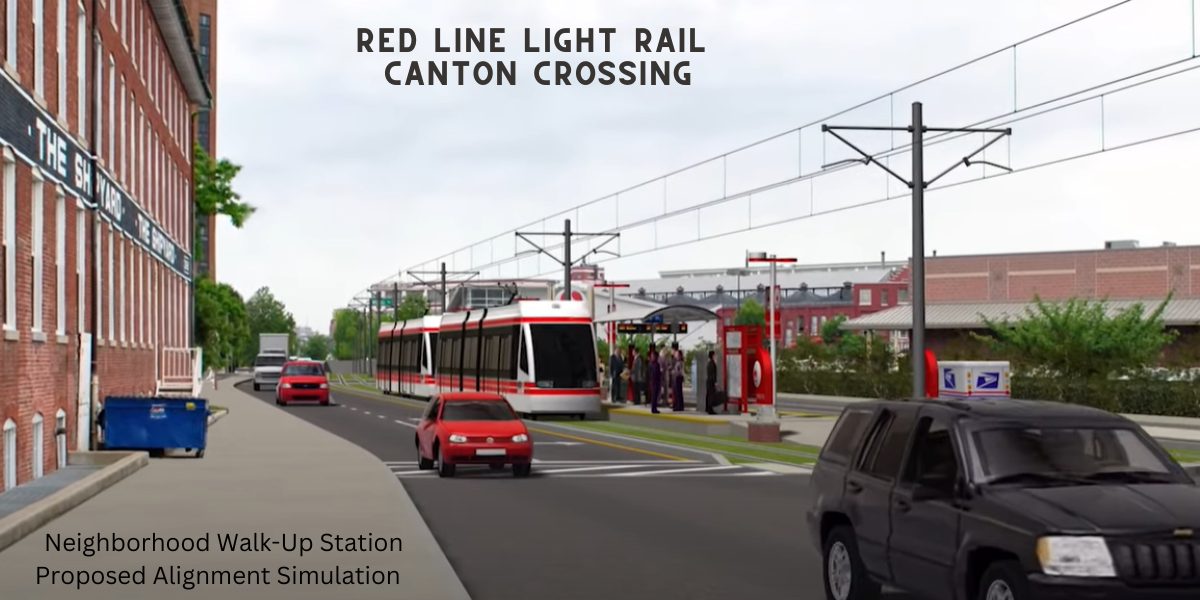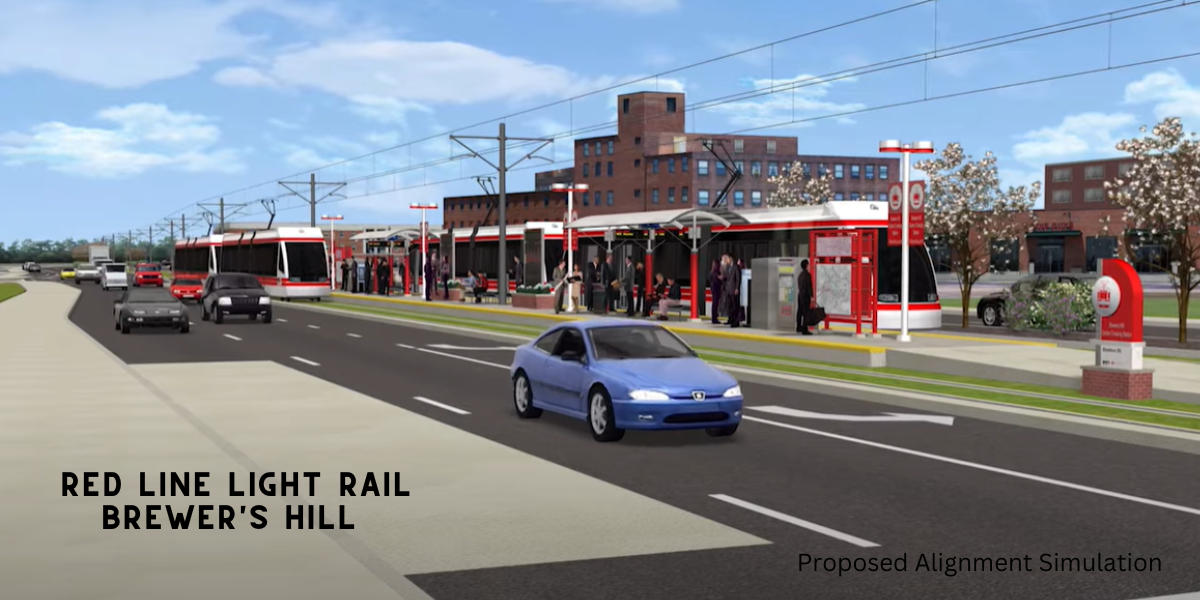T
The Red Line Light Rail is an east-west rail line that was under development in Baltimore between 2001 and 2015. It was scheduled to be completed in 2022.
The project is planned to be 14 miles long, running from the Centers for Medicare and Medicaid in the west to Bayview Medical Center in the east. It was projected to create 10,000 jobs and bring $3-6.5 billion in transit-oriented-development to the region.
Most area transit experts agree that the process for designing and developing the Red Line was remarkably transparent. The project brought together stakeholders from a diverse set of communities across the city and empowered them to shape the project in a way that worked for them. The design process allowed all residents along the Red Line corridor to stay in their homes. It also addressed all of their concerns around public safety and noise.
The project was fully planned and had secured all federal funding when Governor Hogan cancelled it in 2015. In order to do this, Hogan gave $900 million in funding back to the federal government, so that he could shift the state’s planned $736 million contribution to funding highways in other parts of the state.
At the time of its cancellation, several groups, including the ACLU and BTEC, filed a Title VI complaint with the federal Department of Transportation against Hogan. The cancellation of the Red Line by Larry Hogan was illegal and even today, most transit experts agree that the cancellation was textbook structural racism.
On June 15th, 2023, Governor Moore announced the relaunch of the Red Line Light Rail Project. To be completed, the Final Enviornmental Impact Statement (FEIS) needs to be re-evaluated. The path for the rail system is very clear, and the project has wide local, federal, state and community support.
The Redline is the most immediate and effective way to improve transportation in the Baltimore region.
RED LINE RECORD OF DECISION
Signed February 28th, 2013
This Record of Decision (ROD) applies to the Preferred Alternative described in the Final Environmental Impact Statement (FEIS) issued on December 14, 2012. The FTA is the lead federal agency for this project while the Maryland Transit Administration (MTA) is serving as the project sponsor. The Federal Highway Administration (FHWA) is a cooperating agency.
The Record of Decision (ROD) authorizes the respective state transportation agency to proceed with design, land acquisition, and construction based on the availability of funds.
RED LINE Final Environmental Impact Statement (FEIS)
December, 2012
The FEIS provides a comparative analysis between the No-Build Alternative and the Preferred Alternative for the Red Line project so that interested citizens, elected officials, government agencies, businesses, and other stakeholders can assess the potential environmental and socioeconomic effects of the Red Line project.
The Federal Transit Administration (FTA) has determined, pursuant to Title 23 of the Code of Federal Regulations (CFR), Part 771, and Title 40 CFR Parts 1500-1508, that the requirements of the National Environmental Policy Act of 1969 (NEPA) have been satisfied for the Red Line project.
RED LINE Community Compact
Signed September 12, 2008
The Red Line Community Compact was initiated at the Mayor’s Red Line Summit on May 10, 2008. More than 300 community, business, and advocacy group leaders came together to learn from other cities about how they have maximized community benefits as a part of major transit projects.
By focusing our energies not just on the discussion of where the line will run and where stations will be located, we can define the success of the Red Line in many ways and determine how it will best fit into our communities.
If planned, designed and constructed in accordance with this set of goals and strategies, the Red Line Project will generate jobs, present economic opportunities and offer housing choices, while enhancing our unique urban environment, neighborhoods and historic districts.
RED LINE Station Area Advisory Committees (SAAC)
SAAC Appreciation Video
The Station Area Advisory Committees provided the Maryland Transit Administration (MTA) with valuable feedback on station locations, transit development opportunities, pedestrian access, station layout and design, and area specific safety considerations.
Testimonials
Robert Wray, Committee Member
Canton SAAC
Holly Storck, Committee Member
Highlandtown/Greektown SAAC
Robbyn Lewis, Committee Member
Patterson Park SAAC
Courtney Conner, Committee Member
Poppleton/ Harlem Park SAAC

